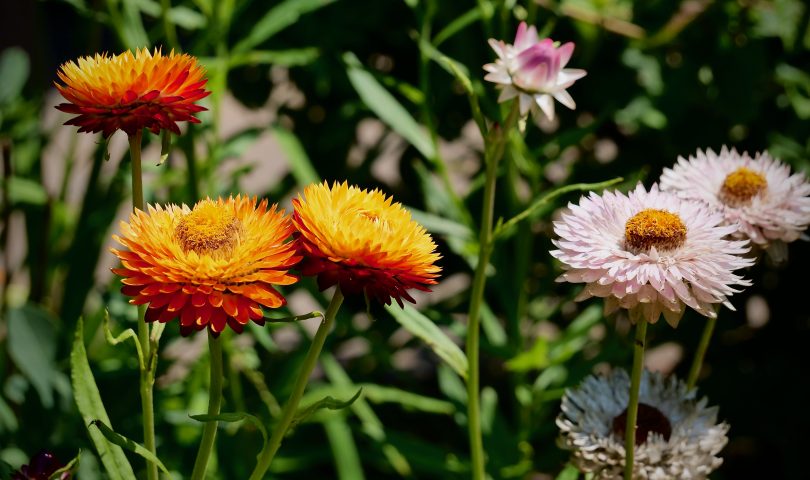BY DAVID P. DAVIS
What’s blooming at the West Virginia Botanic Gardens? Well, just about everything!
As summer comes along, so do many blooms at the WVBG. Joining the asters and daisies (Asteraceae family) are now the hibiscus (mallow family, Malvaceae) and the hydrangea (Hydrangeaceae family). These three large families of flowers are slugging it out at the WVBG for who will be best of show.
For sheer numbers, the asters and daisies are in the lead. Joining the black-eyed Susan and the purple coneflowers are the Shasta daisies (Leucanthemum × superbum).
Named after the snows of Mount Shasta, this daisy is a cross of four different wild daisies with the intent to develop a large, robust, and sturdy bright white daisy.
Due to the success of the breeder (Luther Burbank), the Shasta daisy is a common choice for gardeners today. At the WVBG we have multiple large masses of Shasta daisies in the Yagle Garden and along a walk to the Secret Garden. They complement other perennials now in bloom like wild bergamot (Monarda fistulosa) and purple coneflower (Echinacea purpurea).
The hibiscus, after a slow start, is getting off the line with rose of Sharon (Hibiscus syriacus) opening up with their large white and pink blooms.
At the WVBG, we have what has become a wall of rose of Sharon shrubs that will compete well in the Yagle garden for best bloomer. They will soon be joined by large rose mallow (Hibiscus rosa-sinensis) in shades of white, pink and purple.
The hydrangea is not far behind in this competition. Two panicle hydrangeas (Hydrangea paniculata) are now blooming— “Great Star” shrub hydrangea and “Vanilla Strawberry” tree form. We have many of these specimens throughout the Yagle garden and they form much of the vertical structure of the garden.
I must warn any lover of nature that with this many blooms coming along at the WVBG, so are the insects (yeah!). Right now, the Hymenoptera (bees, wasps, and ants), Lepidoptera (moths and butterflies) and Coleoptera (beetles) are really enjoying all the nectar and pollen. If you get close to this cacophony of blossoms, you will be entertained with the buzz of bee delight and the flaps of butterfly wings (the beetles are mostly enjoying themselves in silence).
Come flit over to your WVBG and become a member soon!




